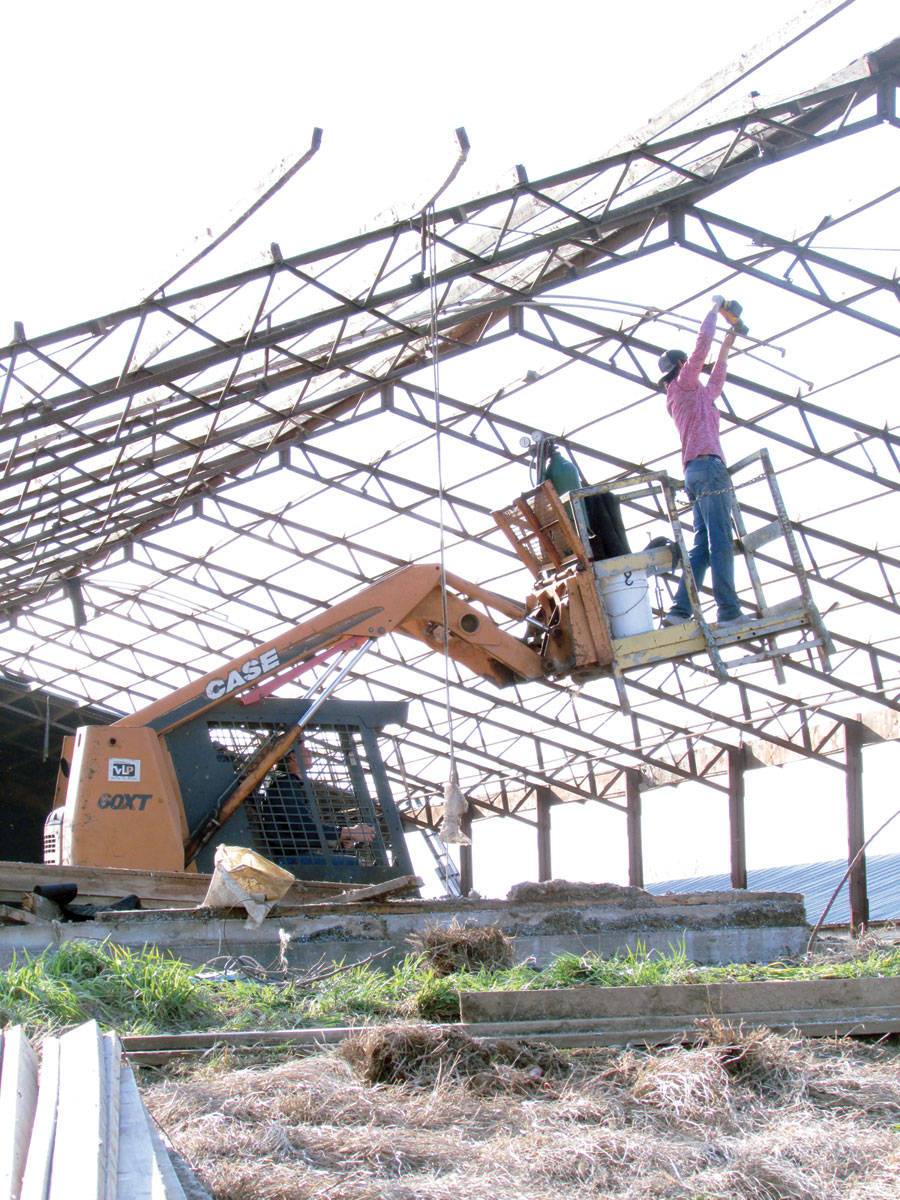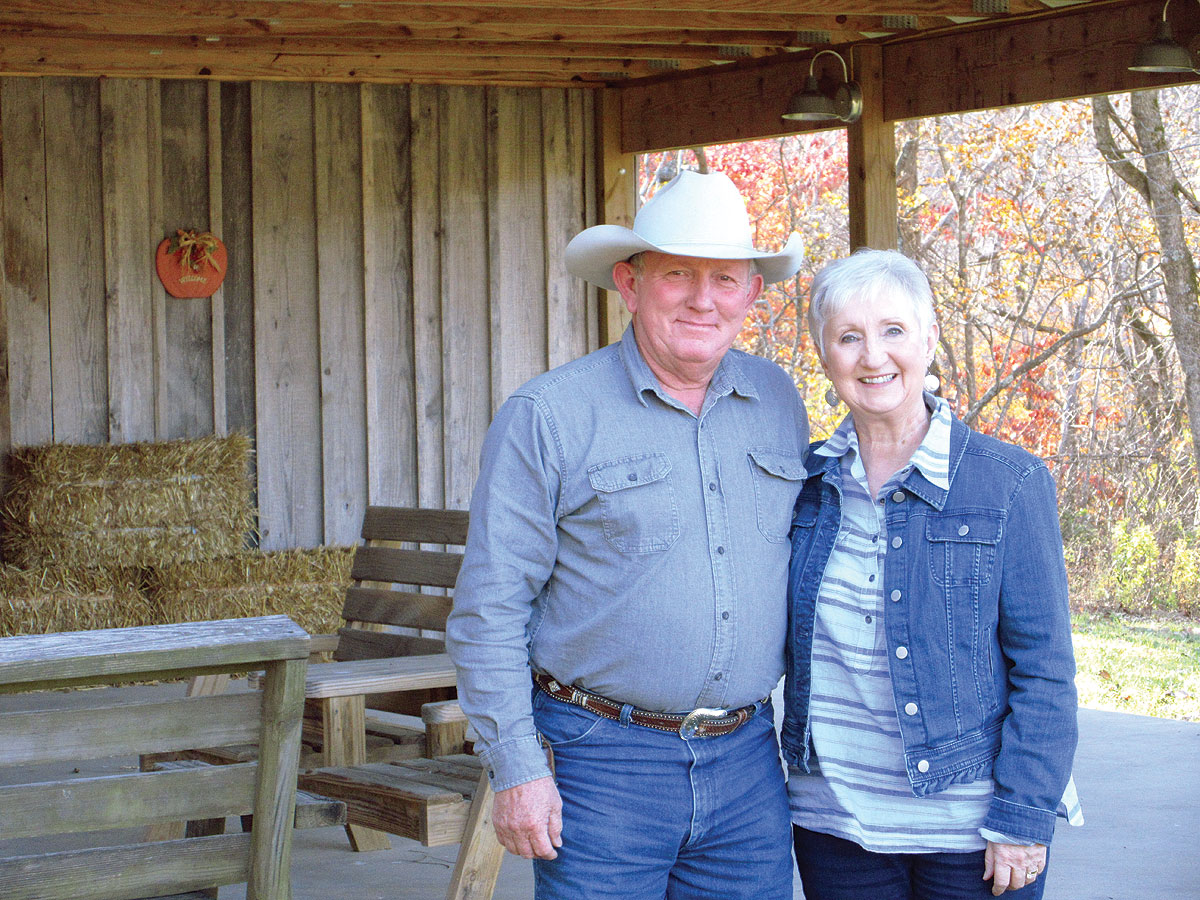
Young entrepreneur works to remove and repurpose poultry houses
When viewed from the air, it’s obvious that commercial poultry houses — whether used for broiler grow-out or egg production — have become an integral part of the Southwest Missouri, Northwest Arkansas and Northeast Oklahoma landscapes.
Sometimes, however, after contracts with poultry companies are fulfilled, landowners are either ready to retire, or they’re unwilling to invest in the upgrades required to renew their contracts. Opting out, they often allow their once-productive houses to sit empty, in part because options for repurposing the buildings seem limited.
Mitchell Coulter, 26, has been involved in the construction business since he was 14 years old and is providing a solution to the conundrum, though. As part owner of Advantage Services, a home construction and remodeling business based in Fort Scott, Kan., Mitchell purchased a 28-foot fifth-wheel trailer and is taking a poultry house de-construction service to the road. His motives are not purely altruistic. For Mitchell, and the contractor he often does sub-contracting work for, the salvaged materials from unused poultry houses represent prospective money in the bank. While not exactly treasure, Mitchell said the redeemed materials are definitely worth the labor-intensive hours invested in salvaging them.
Along with his friend and employee, 20-year-old Chris Ahrens, Mitchell is currently dismantling four poultry houses for a Barry County, Mo., property owner who opted out of making the required upgrades to his structures.
“We contract with landowners to remove their poultry houses in exchange for the salvaged materials,” Mitchell explained. “We pay them X amount of dollars per chicken house removed. Landowners are paid in installments. They receive a deposit before we start tearing down a house, and they receive the balance for that house after the tear-down is complete.”
At the end of the entire project, according to Mitchell, the landowner must give consent that the job has been completed to satisfaction before the final payment is made. It’s in the landowner’s best interest to ensure all debris is removed; if not, it could blow onto neighboring properties and cause damage.
Because of the dirty, time-consuming nature of the work, not everyone would be willing to tackle the tear-down of used chicken houses, but for Mitchell and the landowner, it’s proving to be a win-win situation.
“The landowner gets paid for something he’s not using; I resell the salvaged material and get paid for my labor,” Michelle explained.
When beginning a tear-down, Mitchell and Chris first gut the interior of the structure, removing the feeders and waterers, and then move to the side skirting. From there, the real fun begins with the removal of roof metal, lumber and trusses. Every salvageable board is painstakingly de-nailed, with much of the work accomplished only by reaching over their heads, either from a skid-steer or a truck-mounted scaffold.
“We resell most of the materials on online marketplaces, typically Facebook and Craigslist,” Mitchell explained. “And, because people in the Fort Scott area know us, they often contact us directly when they want to buy used lumber for some type of agricultural project.”
Coulter and his crew typically break down standard, older-style 400-foot chicken houses into 100-foot kits for resale.
“The kits contain everything needed for either open-sided hay barns or enclosed storage buildings, including 2-by-4s, purlins, roof trusses, sheet metal and ridge cap,” Mitchell explained. “Barns and storage buildings made from repurposed materials can save a landowner a lot of money, when compared to the price of building a new structure. Plus, it makes me feel good to know that the materials are not going to waste.”
Lumber, roof trusses and sheet metal are not the only materials that can be salvaged for resale. According to Mitchell, most of the elements can be resold, right down to the nails.
“We recently had a buyer call us asking about our salvaged waterers, and we worked out a deal with him,” Mitchell revealed. “He was interested in all that we could come up with, so we’re happy to have his name and number to add to our client list.”
Mitchell indicated that it typically takes two, five-day weeks of labor to tear down one 400-foot chicken house and re-bundle the salvaged elements for resale. Much is dependent upon the cooperation of the weather.
“There’s been more than one day that we’ve started at daybreak and worked until 1 a.m., simply because we’ve had to,” Mitchell indicated.







